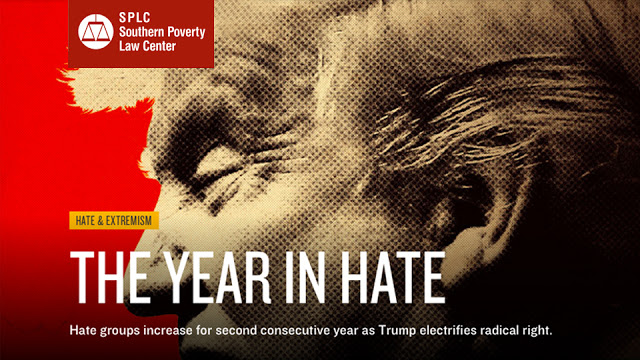By Ed Diokno
Views from the Edge
A year ago, the headline of the report on hate groups by the Southern Poverty Law Center read “Hate Groups on the Rise.” Sadly, this year’s report concludes that hate groups have risen for the second year in a row.
“He seemed to encourage violence against Black protesters at his rallies, suggesting that he would pay the legal fees of anyone charged as a result,” said Potok.
The most dramatic growth, according to the report, was the near-tripling of anti-Muslim hate groups – from 34 in 2015 to 101 last year.
The growth has been accompanied by a rash of crimes targeting Muslims, including an arson that destroyed a mosque in Victoria, Texas, just hours after the Trump administration announced an executive order suspending travel from some predominantly Muslim countries. The latest FBI statistics show that hate crimes against Muslims grew by 67 percent in 2015, the year in which Trump launched his campaign.
The report, contained in the Spring 2017 issue of the SPLC’s Intelligence Report, includes the Hate Map showing the names, types and locations of hate groups across the country.The SPLC found that the number of hate groups operating in 2016 rose to 917 – up from 892 in 2015. The number is 101 shy of the all-time record set in 2011, but high by historic standards.
“2016 was an unprecedented year for hate,” said Mark Potok, senior fellow and editor of the Intelligence Report. “The country saw a resurgence of White nationalism that imperils the racial progress we’ve made, along with the rise of a president whose policies reflect the values of White nationalists. In Steve Bannon, these extremists think they finally have an ally who has the president’s ear.”
The increase in anti-Muslim hate was fueled by Trump’s incendiary rhetoric, including his campaign pledge to bar Muslims from entering the United States, as well as anger over terrorist attacks such as the June massacre of 49 people at a gay nightclub in Orlando.
The overall number of hate groups likely understates the real level of organized hatred in America as a growing number of extremists operate mainly online and are not formally affiliated with hate groups.
Aside from its annual census of extremist groups, the SPLC found that Trump’s rhetoric reverberated across the nation in other ways. In the first 10 days after his election, the SPLC documented 867 bias-related incidents, including more than 300 that targeted immigrants or Muslims.
Also, in a post-election SPLC survey of 10,000 educators, 90 percent said the climate at their schools had been negatively affected by the campaign. Eighty percent described heightened anxiety and fear among students, particularly immigrants, Muslims and African Americans. Numerous teachers reported the use of slurs, derogatory language and extremist symbols in their classrooms.
Here are the main articles in this issue (view full issue):
The Year in Hate & Extremism — by Mark Potok — The radical right was more successful in entering the political mainstream last year than in half a century. How did it happen?
Eye of the Stormer — by Keegan Hankes — Propelled by the Trump campaign and a new focus on the ‘alt-right,’ the Daily Stormer is now the top hate site in America.
One More Enemy — by Stephen Piggott — ‘Patriot’ groups have long seen the government as their primary enemy. But now, the movement is adopting Anti-Muslim hate.
The Kidnapping of Isabella — by Ryan Lenz — In 2009, a former lesbian in a custody battle fled with her 7-year-old girl. The case still haunts the anti-LGBT movement today.
Attorney for Aryans — by Ryan Lenz — Radical lawyer Kyle Bristow has started a new foundation that aims to become the legal arm of the racist radical right.
The Trump Effect — by Mark Potok — The campaign language of the man who would become president sparks hate violence, bullying, before and after the election.
Hate Map — An interactive display of all 917 active hate groups in 2016.
One thing seems certain, “The radical right is feeling its oats today in a way that few Americans can remember,” says the report. “There are very large numbers of Americans who agree with its views, as sanitized under the deceptive Alt-Right label, although many of them may be less visible than before because they are not affiliated with actual groups. Whether or not the movement grows in coming years, it seems indisputable that its views have a better chance to actually affect policy now than in decades.”
(AsAmNews is an all-volunteer effort of dedicated staff and interns. You can show your support by liking our Facebook page at www.facebook.com/asamnews, following us on Twitter and sharing our stories.)



